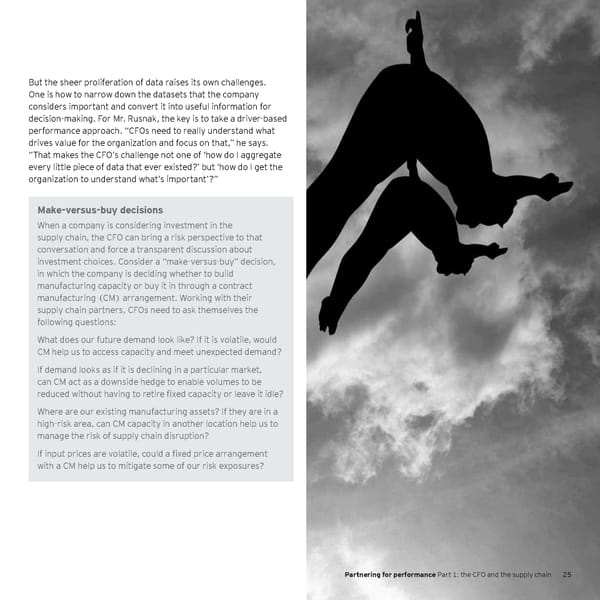But the sheer proliferation of data raises its own challenges . One is how to narrow down the datasets that the company considers important and convert it into useful information for decision-making. For Mr. Rusnak, the key is to take a driver-based performance approach . “CFOs need to really understand what drives value for the organization and focus on that,” he says . “That makes the CFO’s challenge not one of ‘how do I aggregate every little piece of data that ever existed?’ but ‘how do I get the organization to understand what’s important’?” Make-versus-buy decisions When a company is considering investment in the supply chain, the CFO can bring a risk perspective to that conversation and force a transparent discussion about investment choices. Consider a “make-versus-buy” decision, in which the company is deciding whether to build manufacturing capacity or buy it in through a contract manufacturing (CM) arrangement. Working with their supply chain partners, CFOs need to ask themselves the following questions: What does our future demand look like? If it is volatile, would CM help us to access capacity and meet unexpected demand? If demand looks as if it is declining in a particular market, can CM act as a downside hedge to enable volumes to be reduced without having to retire fixed capacity or leave it idle? Where are our existing manufacturing assets? If they are in a high-risk area, can CM capacity in another location help us to manage the risk of supply chain disruption? If input prices are volatile, could a fixed price arrangement with a CM help us to mitigate some of our risk exposures? Partnering for performance Part 1: the CFO and the supply chain 25
 Partnering for Performance Part 1 Page 26 Page 28
Partnering for Performance Part 1 Page 26 Page 28